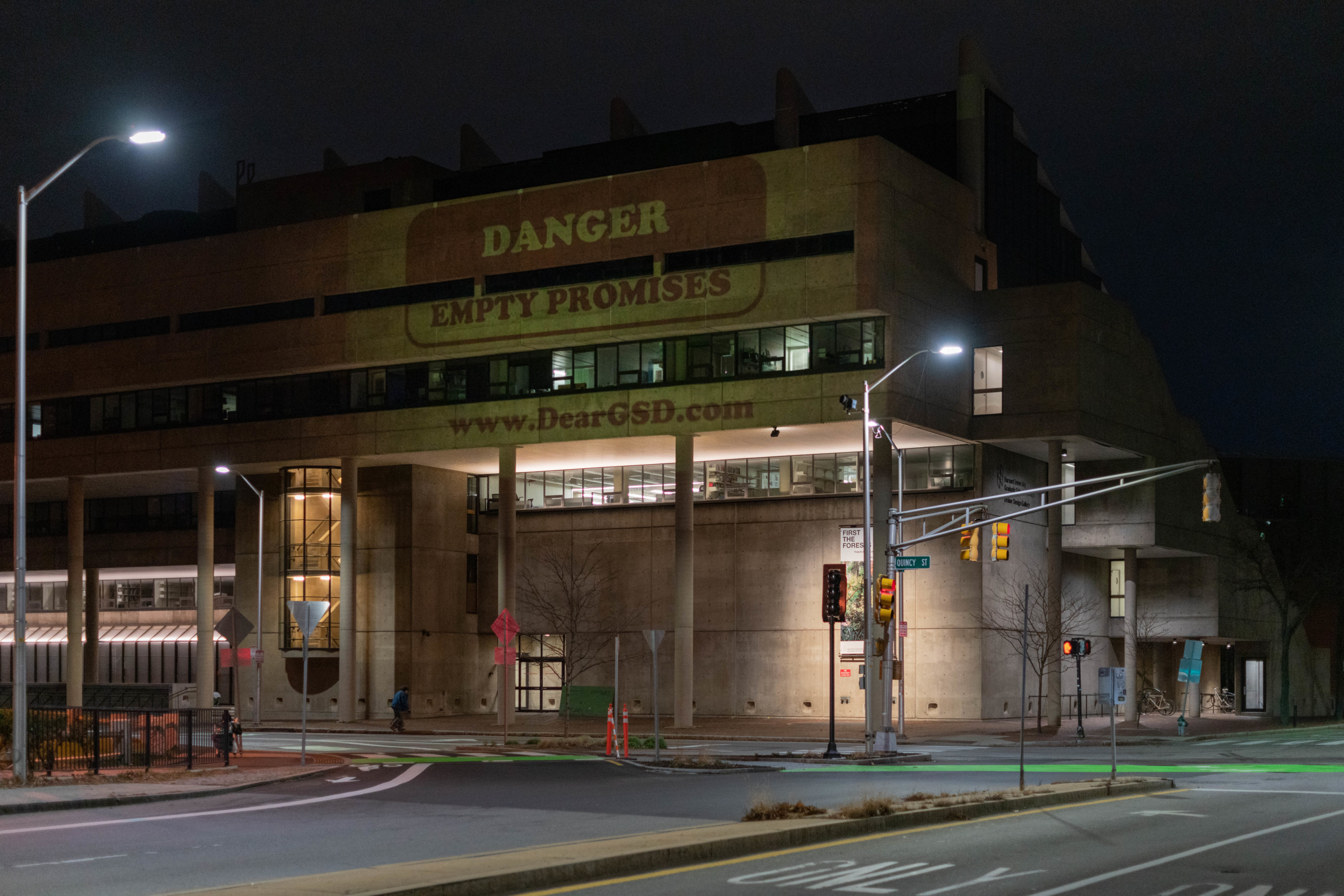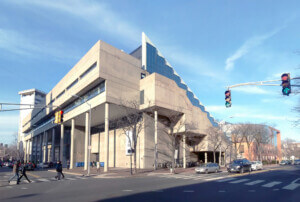After introducing a series of sweeping structural changes to the school’s Master in Design Studies (MDes) program last month, Harvard’s Graduate School of Design (GSD) continues to face intense criticism from current students and alumni alike. Confronting high-level administrators through online platforms and internal town hall meetings, disgruntled members of the MDes community have expressed frustration with the GSD’s decision-making process and its impact on students’ access to resources, curricular flexibility, and future employability.
Established in 1984 and directed by Professor K. Michael Hays, MDes is a four-semester post-professional degree program for students looking to hone certain areas of expertise within the design fields and apply knowledge towards work in academia, the nonprofit sector, public service, or other endeavors. Citing the importance of interactive and interdisciplinary research methods in design pedagogy, the GSD promotes MDes as a program that prepares designers for “the decade of 2020” and its “multiplying planetary crises requiring novel responses and fundamentally new horizons of inquiry.”
For much of the program’s history, MDes students opted into one of eight discrete concentrations, including Risk and Resilience; Art, Design, and the Public Domain, and Critical Conservation. In an email sent to the entire GSD student body on October 23rd, Dean Sarah Whiting announced the consolidation of the concentrations into four “domains of inquiry”: Ecologies, Mediums, Narratives, and Publics.
The move, Whiting wrote, reflected a desire to “question the over-standardization of knowledge and method” and encourage “a more elastic, intellectually generous, and embracing approach to design questions.” The changes are to be implemented in Fall 2021 with the caveat that current students will be able to continue on their current academic trajectories through graduation.
The backlash to the GSD’s initial announcement was swift. Students in the MDes program pointed to the school’s lack of transparency and communication, as well as its discombobulated rollout of the updated program, as evidence of a rushed process. By October 27th, a group of 376 MDes students and alumni representing all eight concentrations drafted, signed, and sent a letter with a list of five demands to Dean Whiting.
The document, which was updated on November 2nd, acknowledges the need for changes to the MDes program while pushing the school to take a more participatory and inclusive approach. Signatories stress the importance of “radical experimentation outside of the traditional [design] disciplines”—an apparent rebuke of the school’s attempt to fit MDes concentrations into “generic and ambiguous” boxes led by “domain heads” from the GSD’s three professional programs (architecture, landscape architecture, and urban planning). As students have pointed out, only one of the newly appointed leaders of the four domains of inquiry, Allen Sayegh, is deeply involved in the MDes program as it is.
The consolidation of the more granular concentrations into broader domains has also raised questions about the distribution of faculty and other school resources. Some students fear that the restructuring will erode the relationships they have built with existing concentration-based advisors, while larger cohorts within each domain will hinder their ability to build meaningful new relationships with domain heads.
The seniority of the faculty appointed to lead each domain compounds this issue. As one recent MDes alumna pointed out, “those faculty have other commitments. They teach studios, they run design labs, they’ve already committed most of their time to other projects.” A noted benefit of the MDes program in past years, she argued, has been the intimate connection between small cohorts and their area heads, cultivated through weekly meetings and shared research interests.

According to The Crimson, Harvard’s student newspaper, Hays contends that the new program structure will allow for more flexible and interdisciplinary learning. Due to the lack of clarity regarding course requirements for the new domains, though, many students remain skeptical about the resources that will be available to continuing students next fall, as well as the academic experience that awaits incoming students once they arrive on campus.
Snow Xu, a current first-year student in the Art, Design, and the Public Domain track, noted that “right now, we have very little information about the ‘proseminars’ that will be required classes for all MDes students. We’ve been told that details about curricular structure will be announced in January, but that is after the deadline to apply for the MDes program.”
In broader terms, another first-year student in a different track highlighted the incongruity between the MDes changes and the GSD’s purported mission to foster a more antiracist learning environment. With the school promising to prioritize faculty diversification and gradually render its design pedagogy less Eurocentric and White, she argues that the decision to rely primarily on tenured faculty for major decisions seems counter-intuitive. One alumna pointed out that the GSD’s senior professors are overwhelmingly White and that, by barring students and younger, more diverse instructors from having a say in the MDes restructuring process, the school moved away from the antiracist objectives it outlined after receiving pressure from students over the summer.
Shane Ah-Siong, a first-year MDes student, also questioned the decision to merge MDes’s most socially driven concentrations into a single domain, Publics: “Isn’t that contrary to what the school aimed to do in response to the protest movement over the summer? To combine all these areas of study into a single thing is bizarre. We should have more options for those wanting to pursue justice-oriented work, not fewer.”
Adding to students’ anxiety about their future at the GSD, the pandemic has already prompted several fundamental changes to design pedagogy at the school. With the GSD committing to a second fully-remote semester in Spring 2021, students hoping to avoid more virtual learning have the option to request a temporary leave of absence. But with MDes changing so quickly, one first-year noted, “there is no guarantee that certain advisors, areas of study, or even spatial resources will be available when we come back.”
Ah-Siong also contrasted the school’s eagerness to quickly reconstitute MDes with its unwillingness to give any GSD students access to on-campus resources during the COVID-19 pandemic: “So we can wait a year for a coronavirus vaccine, but we can’t possibly wait a couple of years to change MDes?”
As of right now, while the administration views the developments as “evolving,” there does not seem to be any intention to completely reverse course. Members of the MDes community have duly turned to new forms of protest. This week, a group of students lodged a formal complaint about the situation with Harvard University’s president and provost, hoping that additional pressure might prompt the GSD to reconsider.
Last Saturday evening, in a more symbolic move, another group of students took their concerns to the formidable walls of Harvard’s Gund Hall—a facility that they have been barred from entering since March. Projecting a series of stark messages onto the exterior of the building, their protests were an expression of mounting frustration. For those who feel deceived by the GSD’s decision-making process and its resulting uncertainties, one warning sign carried particular heft. Displayed on a bright green background, it read: “DANGER: EMPTY PROMISES.”











